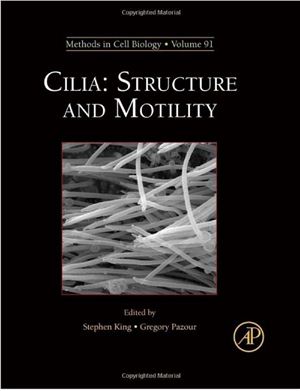Academic Press, 2009, 344 pages
Along with its companion volume on intraflagellar transport, this book provides researchers with a comprehensive and up-to-date source of methods for the analysis cilia and flagella, focusing primarily on approaches that have been devised or significantly extended since the last volume of Methods in Cell Biology on this topic (volume 47, 1995). Edited by Stephen M. King and Gregory J. Pazour, the newest installment of this highly acclaimed serial will serve as an essential addition to the study of cilia and flagella.
Covers protocols for cilia and flagella across systems and species.
Both classic and state-of-the-art methods readily adaptable across model systems, and designed to last the test of time .
Relevant to clinicians interested in respiratory disease, male infertility, and other syndromes, who need to lea biochemical, molecular, and genetic approaches to studying cilia, flagella, and related structures.
With the explosion of interest in cilia, the model organisms available to study cilia and flagella have grown much more diverse, and the techniques available for assessing cilia structure and function have become more sophisticated. Volume 91 focuses on general methods to study these organelles covering microscopic techniques for both structural analysis and detailing motility parameters, as well as biochemical approaches to define protein–protein associations and complexes.
Along with its companion volume on intraflagellar transport, this book provides researchers with a comprehensive and up-to-date source of methods for the analysis cilia and flagella, focusing primarily on approaches that have been devised or significantly extended since the last volume of Methods in Cell Biology on this topic (volume 47, 1995). Edited by Stephen M. King and Gregory J. Pazour, the newest installment of this highly acclaimed serial will serve as an essential addition to the study of cilia and flagella.
Covers protocols for cilia and flagella across systems and species.
Both classic and state-of-the-art methods readily adaptable across model systems, and designed to last the test of time .
Relevant to clinicians interested in respiratory disease, male infertility, and other syndromes, who need to lea biochemical, molecular, and genetic approaches to studying cilia, flagella, and related structures.
With the explosion of interest in cilia, the model organisms available to study cilia and flagella have grown much more diverse, and the techniques available for assessing cilia structure and function have become more sophisticated. Volume 91 focuses on general methods to study these organelles covering microscopic techniques for both structural analysis and detailing motility parameters, as well as biochemical approaches to define protein–protein associations and complexes.

